With a seismic shift in how we work, businesses worldwide have to confront a growing new problem — skills gaps. This breeds the need for skills gap analysis.
Have you heard of the recent case where Boeing suffered significant financial losses due to production delays and quality issues with its new 787 Dreamliner aircraft?
And the reason that contributed to these damages?
It’s the skills gap in Boeing’s manufacturing workforce!
So, how to identify such gaps?
It’s easy. Conduct a skills gap analysis!
From the above example, it’s clear that unless you identify the skills gaps, you may not know which skills your employees lack or are in high demand in your industry.
Failing to conduct a skills gap analysis can result in poor productivity, production delays, quality issues, declining sales, reduced competitiveness, and other challenges that can impact an organization’s success.
This is true for all industries.
But this isn’t enough to understand the need for conducting a skills gap analysis, is it?
So, let’s understand what a skills gap analysis is, what it entails, its importance, how to carry it out, and how a quiz maker can help with it.
What Is a Skills Gap Analysis?
A skills gap analysis, also known as skills gap assessment, is the process of identifying the gap between the current skills of employees and the skills they need to perform a particular job well or to meet industry demands.
As a crucial component of workforce planning and development, you can perform the analysis at the individual, organizational, or societal level.
Conducting a gap analysis is essential to identify areas where there is a shortage of skilled workers or a mismatch between present skills and the needed skills.
With the information you gain through analysis, you can create tailored training and education programs, guide workforce development policies, and help individuals decide their career paths.
There are plenty of reasons behind skill gaps, such as:
- Technological advancements
- Lack of training
- Demographic changes
- Globalization
- Changing customer needs
Identifying the exact reason for skills gaps can help organizations develop strategies to address them.
| Pro Tip: Use an online assessment software for skills gap analysis as it comes with an indispensable set of features to create, deliver, track, and analyze your assessments. |
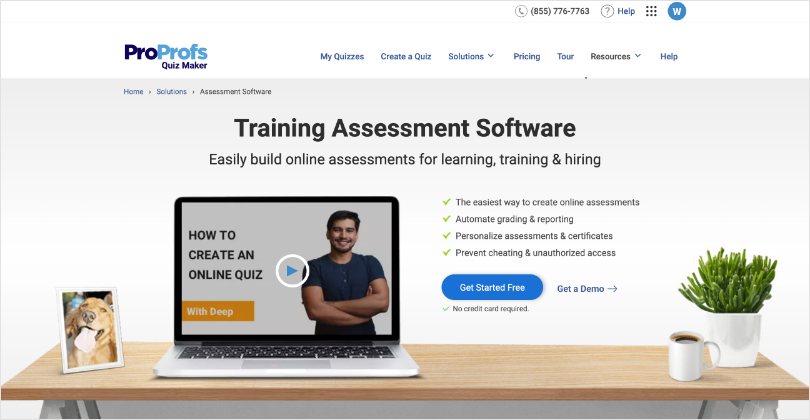
Let’s now understand the benefits of conducting a skills gap analysis, followed by the essential steps to perform it.
Top 5 Benefits of Conducting a Skills Gap Analysis
There are many benefits of performing a skills gap analysis which are as follows:
1. Identify Areas of Skills Improvement
A skills gap analysis will help you identify the missing skills and knowledge in employees to perform their jobs effectively.
So, how can you identify these gaps?
Use an online assessment tool!
With the best assessment solution, you can access a range of editable templates and question banks that’ll help you easily create your skills gap assessments. You can create your assessments in multiple formats, such as fill in the blanks, MCQs, true or false, match the following, etc.

View These Skills Assessment Templates
Adding different question types can keep your participants motivated and encourage them to answer all the questions.
2. Develop Effective Training Programs
Once you identify skill gaps, it becomes easier to understand which areas need improvement.
Accordingly, you can develop targeted training opportunities to address the specific needs of your employees. You can create personalized learning paths to help your learners take courses based on their needs. This will also ensure that your training programs are relevant and effective.
| Pro Tip: Use employee training software to create, deliver, manage, and track your learning programs.
Such solutions come with excellent features, such as: |
Consider this case study of IBM to better understand how skill gaps analysis can help you develop training and learning opportunities.
| IBM analyzed skills gaps in their employees related to emerging technologies, such as artificial intelligence and blockchain. In fact, IBM has announced that they are committed to up-skilling 30 million people by 2030. Based on the analysis, IBM created a personalized learning platform called SkillsBuild to bridge the skills gaps and provide employees with targeted training and development opportunities. |
3. Gain Competitive Advantage
Conducting a skills gap assessment can help you identify areas where your organization may need to catch up in terms of skill sets.
This can allow you to stay ahead of the competition by providing the necessary training and development opportunities to keep your employees up-to-date with the latest industry standards.
4. Reduce Costs
Another benefit of conducting workplace skills gap analysis is reduced costs associated with inefficiencies, errors, and reworks.
When employees have the right skills to perform their jobs, companies can easily reduce the resources and time required for accomplishing tasks.
5. Strengthen Workforce Planning
Conducting a skills gap analysis can be an invaluable method for workforce planning because it enables businesses to anticipate the skills and competencies required for the future workforce.
For instance, if an organization identifies that a new project will demand a new set of skills, it may hire new employees who have the skills or reskill its existing employees to perform the new role.
We have an excellent real-life example to prove how identifying skill gaps can help you with workforce planning.
| Siemens, one of the world’s largest electrical and electronics engineering organizations, uses various workforce planning strategies, including skills gap analysis.
Siemens conducted an extensive analysis of their current workforce and identified areas to determine whether it needed to hire new employees or provide training and development opportunities to existing employees. Upon identifying the gaps, Siemens developed training programs that included online and in-person training, workshops, and mentoring programs. The company also created a dedicated digital learning platform – SITRAIN, to provide employees with training materials and resources. |
So, in a nutshell, a skills gap analysis is important for workforce planning and development. Organizations can improve productivity, quality, and overall success by identifying areas of upskilling and creating effective training programs.
7 Essential Steps to Perform a Skills Gap Analysis
Performing a skills gap analysis may sound easy and straightforward, but it does require careful planning and attention to detail.
We’ll give you a walkthrough of the top seven steps that you can follow.
1. Begin With Careful Planning (With the End in Mind)
“To conduct an effective skills gap analysis, organizations need to engage in careful planning and consultation with stakeholders.” – J. Banks and D. McCarthy, International Journal of Training and Development.
As rightly pointed out by these scholars, a skills gap analysis will be successful only when you design a proper plan. As discussed earlier, you can perform the analysis on three levels – individual, team, and organization. While you measure your employees’ skill gaps, it’s also important to check how teams can work together to achieve certain skill goals.
To plan your analysis, you need to decide whom you want to include in this planning. Department heads can be a good choice, but staff-level employees can also provide better insights.
So, be very clear about whom you want to talk to, as it will paint a better picture of the skills lacking in each department.
2. Set SMART Goals
Any fact-finding mission can go wrong without setting proper goals. Skills gap identification is possible only when you know what you want to achieve in the long run. This may require you to consider the bigger picture, including revising mission statements and desired outcomes.
Once you are able to determine what you’re trying to accomplish in the next five to ten years, you can understand if you’re on the right track to getting there.
| Pro Tip: Make sure your goals are Specific, Measurable, Achievable, Relevant, and Time-bound (SMART). |
SAMPLE SMART GOAL
| Specific | Improve technology skills among employees. |
| Measurable | Conduct skills assessments to identify gaps and track progress. |
| Achievable | Conduct regular training sessions and assign mentors to employees. |
| Relevant | Technology skills are essential for the success of an organization in this digital age. |
| Time-Bound | Increase technology competency among employees by 20% within the next 12 months. |
You may also watch this video to learn how to set SMART goals.
Watch: How to Set SMART Goals | Training Course Introduction
3.Identify Future Skills
It’s not sufficient to envision where your company will be in the coming few years, but it is also essential to identify the key trends in the industry and where they are heading as a whole. This will help you set your target range of skills that’ll be needed in the future.
In this regard, the HRs and the talent acquisition teams can give you solid knowledge about the skills that they’re looking for in candidates.
Remember: Not every skill will be essential for your business. So, there are two important things you need to consider before evaluating skills gaps:
- What skills do you value as an organization?
- What skills do you think are important for your employees to perform well in the present and the future?
So, how can you find answers to these questions?
It’s easy.
Look at your business objectives, job roles, and job descriptions. At this point, you can survey your employees to know about the skills they are willing to learn. Involving them in this process will make them feel included and draw a clear picture of the skills they lack. Or you may also share skill assessment tests with them to identify the gaps.
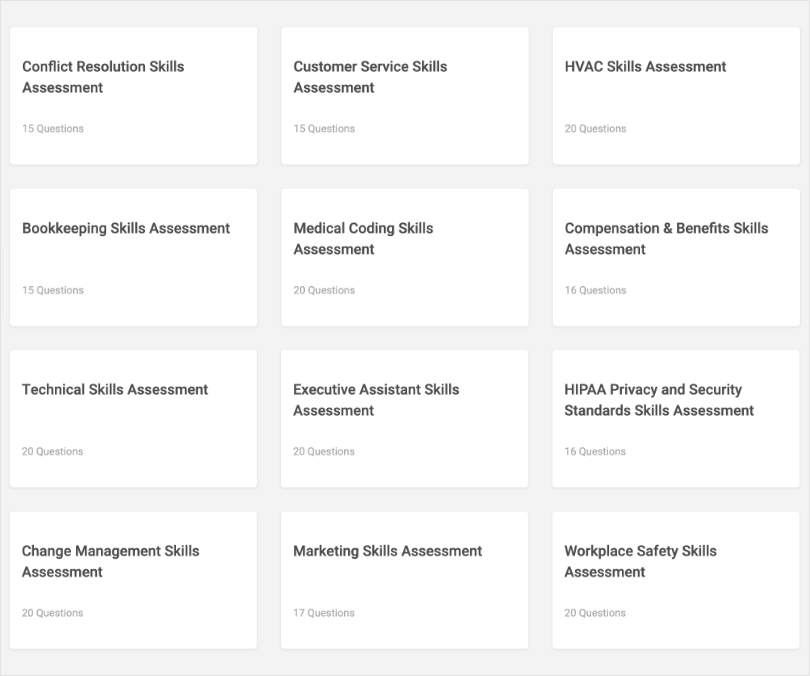
4. Measure Existing Skills
As discussed in the previous step, surveys can be a great option to measure the current skills in your organization.
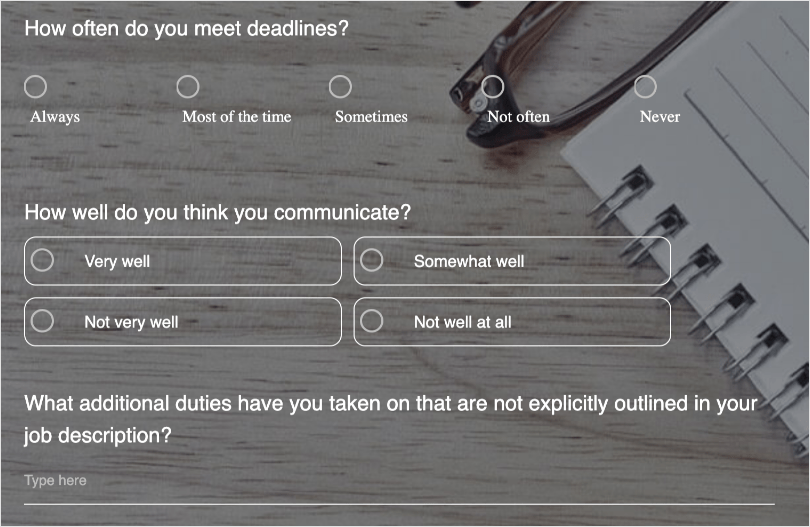
But apart from this, there are various other ways by which you can measure the skills that your employees have.
This includes:
- Written tests
- Skills based assessments
- Performance reviews
- Conversations with frontline managers
Alternatively, you may also create spreadsheets specific to each individual position. That way, finding the gap between the actual and required skill levels becomes easier.
Read More:Conducting Gap Analysis: Steps, Tools and Examples
5. Identify the Gaps
Once you’ve measured the existing and the required skills, you can identify areas where there is a mismatch.
These disparities may pertain to current gaps or those that may not align with the future. Identifying these gaps can help you design solutions for immediate needs and determine the priorities for your future business.
Some examples of skills gap analysis include:
- New hires lacking the necessary technical expertise to operate upcoming machinery or software that will be introduced to your industry in the next five years.
- Existing staff not keeping up with the evolving legal terminologies in the medical or insurance sectors.
Once you have recognized the scarcity of vital skills, or the existence of a gap, you can take steps to address the issue going forward.
6. Define Learning Pathways
One of the best ways to address these skill gaps is to create learning pathways for your employees. This will allow them to progressively build knowledge through mastery of different topics.
Arrange the courses in a logical sequence to facilitate a smooth learning experience, guiding learners from the basics to more advanced versions of the subject matter.
By breaking down a subject into smaller, more manageable parts, learning paths can make it easier for learners to build skills gradually without feeling overwhelmed or discouraged.
| Quick Tip: To monitor learner progress and promote the success of your learning programs, consider incorporating quizzes or assessments at the end of each chapter of your course. Automatically grade your quizzes to make results instantly available, and provide immediate feedback.
You can make passing each test a requirement to unlock subsequent chapters, providing learners with a clear sense of their progress and promoting engagement. This will ensure learners master the information and skills necessary to achieve their goals. Refer to this guide to set up mandatory quiz questions. |
Assessments play a crucial role in learning paths by providing learners with opportunities to evaluate their progress, receive feedback, and deepen their understanding of the material.
By incorporating assessments into your learning paths, you can promote engagement, mastery, and personalized learning experiences that support your learners’ success.
Also Read:Role of Online Assessments in Creating Learning Pathways
7. Measure Knowledge
As discussed in the previous section, skill gap analysis will be of no value until and unless you track progress.
This is where online assessments can play a big role.
Assessments provide a way to track progress over time, enabling learners to see how they are improving and which areas they still need to work.
Based on the assessment reports, you can provide feedback on their performance, highlighting areas where they need to improve and providing suggestions for how to do so.
By incorporating quizzes into your online learning programs, you can help learners identify and bridge skills gaps while achieving the learning objectives.
How to Create an Assessment Online
By following these steps, you can create a comprehensive gap analysis that identifies the skills needed to achieve your business goals and provide a roadmap for improving skills.
How to Create Gap Assessment Tests Using a Quiz Maker
A quiz maker can be a powerful tool for talent and competency gap analysis. You can create a quiz in multiple formats to assess knowledge and abilities of teams or individuals in specific areas.
You can follow these steps or best practices to create engaging gap analysis quizzes.
1. Choose a Professionally Designed Template or Create From Scratch
Generally, there are two ways of creating an online quiz. You can pick a professionally designed template or build your quiz from scratch.
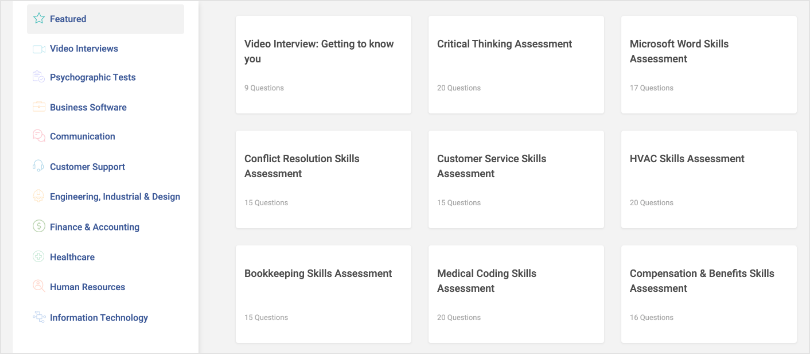
Using a professionally-designed template can solve one of the biggest challenges of quiz creation – i.e., thinking which questions to add. The best skills gap analysis software has a massive library of questions with millions of readymade templates. You can use them as-is or edit them based on your needs.
Watch: How to Create a Quiz Using Question Bank & Templates
2. Create Questions or Import From a Question Bank
Next, you can start with creating your own questions. Or you may add them from an assessment library.
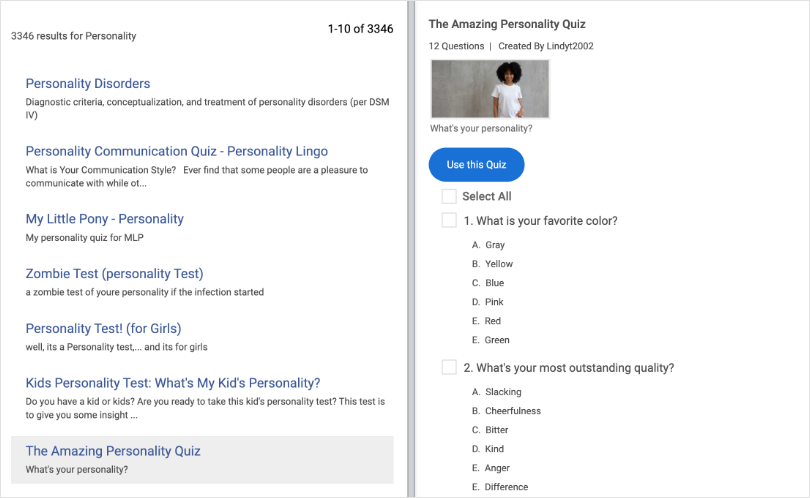
Adding different types of questions like MCQs, True and False, Matching, Hotspot Questions, Video Questions, etc., can boost engagement.
3. Configure Settings
Before sharing the quizzes with your audience, configure them to prevent cheating and unauthorized access.
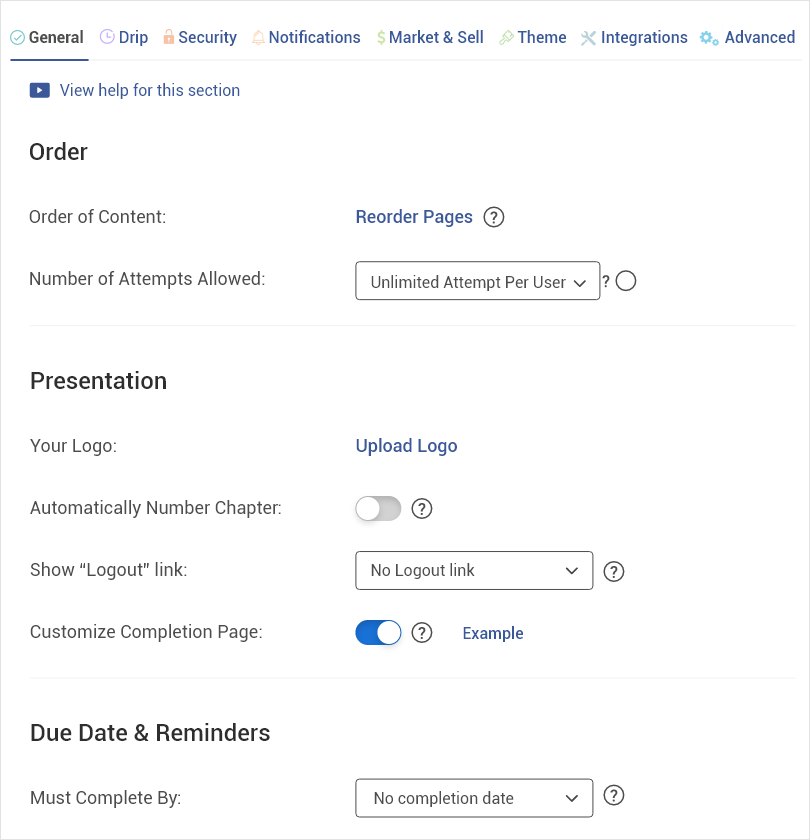
There are various ways by which you can configure your quizzes, such as:
- Set up password and accessibility to a quiz
- Disable tab switching for quiz taker
- Enable proctoring to monitor quiz takers
- Randomize the order of questions
- Limit the time for answering questions
Also, with most quiz makers, you can customize your quizzes with brand elements like logo, themes, background images, fonts, layouts, etc.
Watch: How to Customize & Configure Your Quiz Settings
4.Share With Your Employees
The next step is to share the quizzes with your employees. It’s up to you how, where, and when you want to share your quizzes. That said, there are a few ways by which you can share your quizzes.
Through email
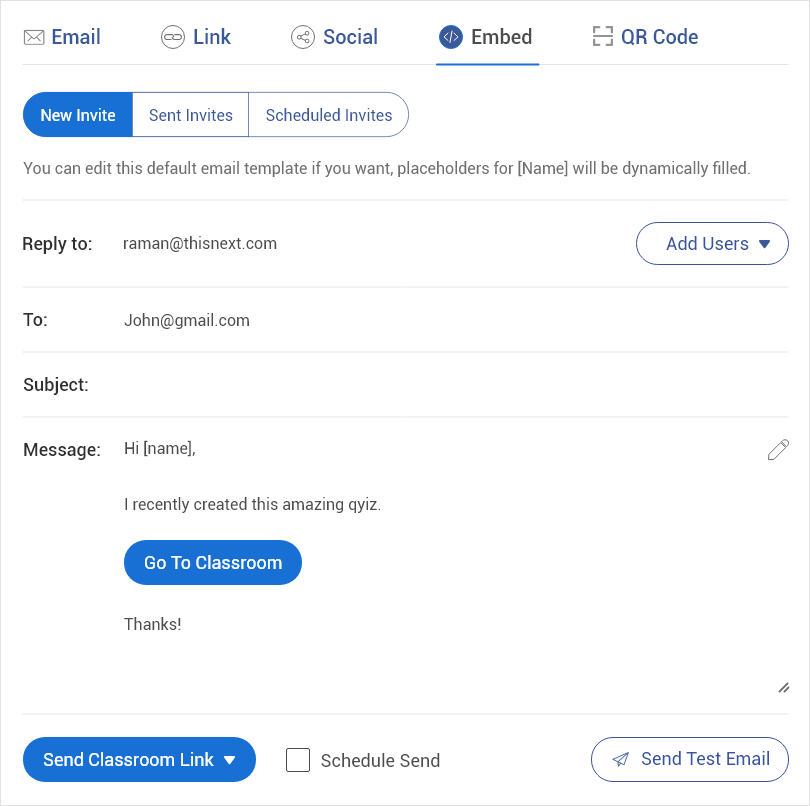
Embed the quiz on your website
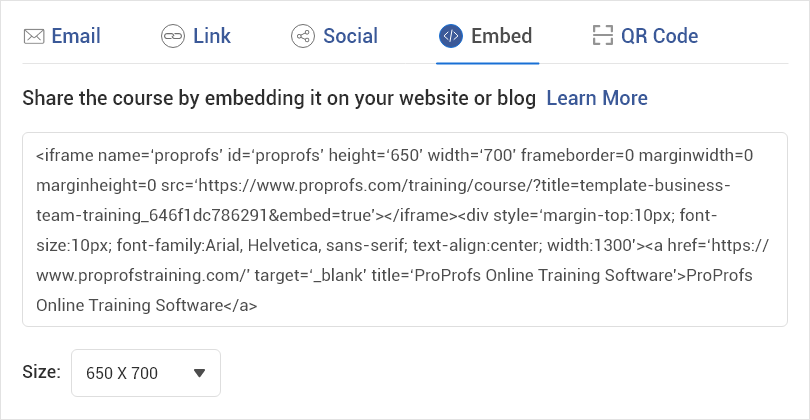
Via a Virtual Classroom
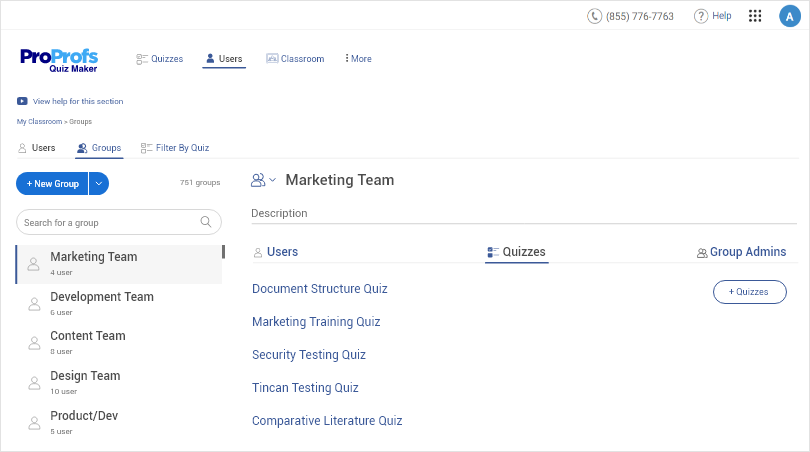
How to Share Your Quiz With Learners
These are just a few of the steps that you can follow to create assessments for skills gap analysis. But there’s a lot more that you can do with an assessment tool. Check out this ultimate guide to know more about the quiz creation process.
Watch: How to Choose the Best Assessment Software
Frequently Asked Questions
What are the examples of skill gaps?
Some of the common skill gaps are a lack of technical skills (programming, database management, or software usage), soft skills (ineffective communication, poor time management, and low emotional intelligence), customer service skills (empathy, active listening, and conflict resolution), and organizational skills (time management, or task prioritization).
How do I identify a skills gap?
There are various ways by which you can identify skill gaps. Take a closer look at the performance of your employees. This includes collecting data to determine competency gaps. There are many approaches to collecting data. This includes conducting assessments and surveys, measuring KPIs, observations, and benchmarking performance.
How to do a skills gap analysis on myself?
First of all, determine your set goals/objectives. This will help you know what skills you’ll need to achieve them. Conduct a self-assessment to identify the gaps. There are plenty of self assessment tools available online for this purpose. Or, you may seek feedback regarding your performance from your colleagues or team leaders. Once you identify the skills you lack, develop a plan to turn them into your strengths. Take online courses, attend conferences, or find a mentor. Lastly, do not forget to track your progress.
Make Skills Gap Analysis an Ongoing Activity!
With the steps discussed above, you should be able to conduct skills gaps easily and effectively. As the business environment changes, the skills needed to succeed also change.
Therefore, analyzing skill gaps is vital to identify the right training and development opportunities that improve employees’ efficiency, boost productivity, and increase job satisfaction and retention rates.
Lastly, make skills gap analysis an ongoing activity. The collected data will help you develop succession plans and ensure your business has a talent pool ready to take on key roles.
FREE. All Features. FOREVER!
Try our Forever FREE account with all premium features!






